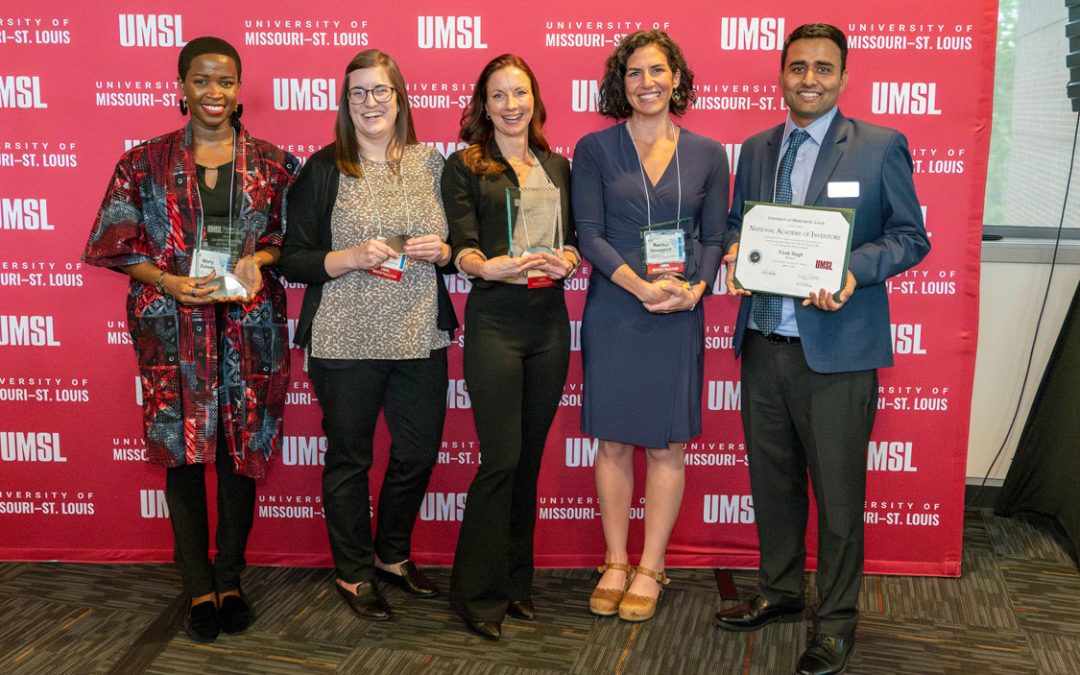
Louis Gerteis, professor of history at UMSL, wrote the book “The Civil War in Missouri: A Military History.” (Photo by August Jennewein)
Many of us labor over choosing a career path. Figuring out what you want to be when you grow up can be tough. But not for Louis Gerteis.
“I always enjoyed history in school,” he says. “It was a subject I had no trouble with, and when I went to college, I decided to pursue it as a vocation.”
Gerteis earned a doctoral degree in history at the University of Wisconsin–Madison in 1969, the same year he joined the Department of History at the University of Missouri–St. Louis. He was made a full professor in 1987.
“UMSL has always valued and promoted interactions and exchanges between the university and St. Louis’ cultural institutions,” he says. “I have enjoyed and benefitted from collaborations with the venerable St. Louis Mercantile Library, Missouri History Museum and the relatively new St. Louis branch of the Missouri State Archives.”
Gerteis’ research focuses on the Civil War, and his most recent papers include “New Madrid Bend: The Most Important Civil War Battle in Missouri,” which was published by Gateway, the magazine of the Missouri History Museum. The University of Missouri Press released Gerteis’ fourth and latest book, “The Civil War in Missouri: A Military History,” in July.
Why did you choose the 19th century as your area of study?
The Civil War era always fascinated me. I was born in Kansas City, Mo., but raised in Arlington, Va. The Civil War seemed close at hand in northern Virginia, and I became interested in its causes and the way it changed society.
What was Missouri’s significance during the Civil War?
Of greater significance was St. Louis. It was the 10th largest city in the nation, the gateway to the West, as we still refer to it today. It was a supply area for the westward migration. Jefferson Barracks was the largest military installation west of the Mississippi River at the time. St. Louis and the Missouri Valley corridor were strategically and militarily important. It was a vital portal to the transportation route to the free-state settlements in Kansas and to the far West.
How does Missouri’s role in the Civil War impact the state today?
The state is still very much divided along the lines that existed at the time. The debates today about the role of the federal government echo the themes that were being discussed during the time of the Civil War. The political and economic distinctions between St. Louis, which voted for Abraham Lincoln, and much of the rest of the state were stark in 1860 and 1861, and they remain stark today. The sense during the Civil War that federal forces had “invaded” Missouri animated those who supported the southern cause and Civil War-era denunciations of federal tyranny would sound familiar in today’s political environment.
While conducting research for your book, did you discover anything that surprised you?
One thing was the scale of the military operation in the taking of New Madrid Bend on the Mississippi River and Island No. 10, which is southeast of New Madrid, Mo. Federal forces won a battle there in the spring of 1862 that opened the river all the way to Vicksburg, Miss. I have been impressed by the efforts of the Missouri State Archives in adopting digital technology to make the vast Provost Marshal records more readily available to historians. The federal Provost Marshals enforced martial law in Missouri during the Civil War, and the records they left behind await systematic use by historians. More needs to be studied and understood about the Civil War in Missouri.
What’s your next project?
I’m working on a history of the Vicksburg Campaign, seen from the perspective of Milliken’s Bend, La. Milliken’s Bend was a major federal staging area and the site of a battle between federal black troops and Confederate soldiers.
This story was originally published in the fall 2012 issue of UMSL Magazine.














